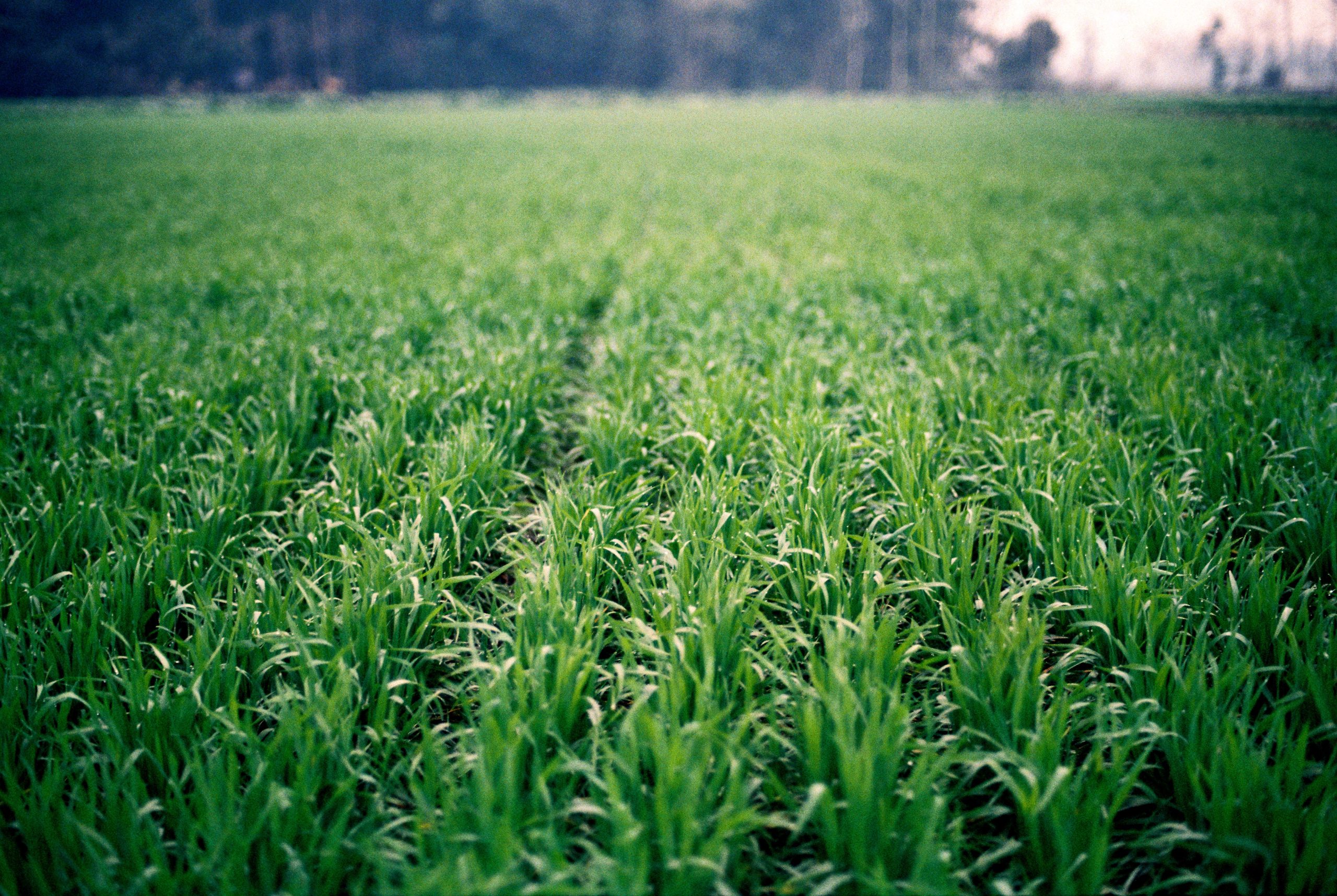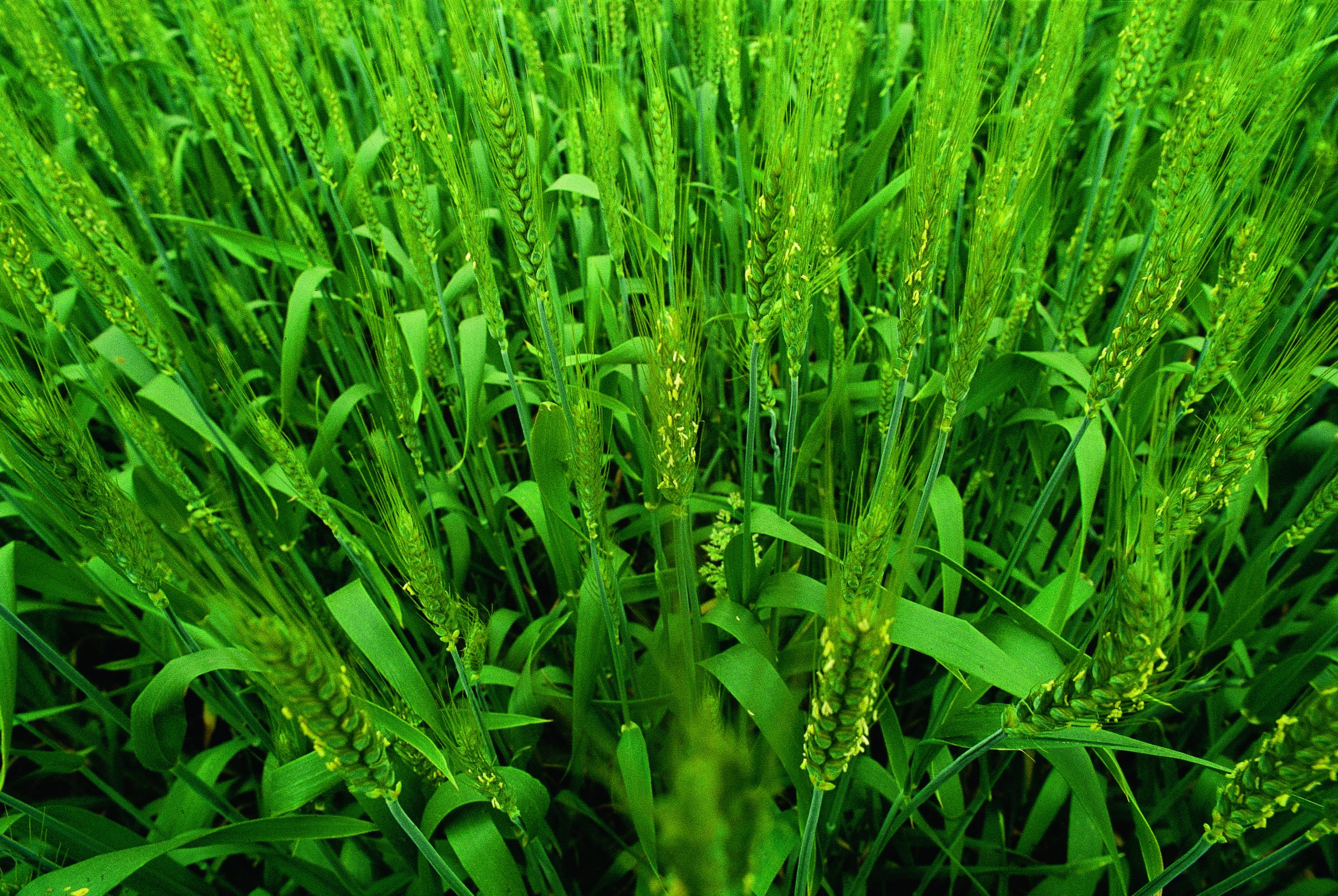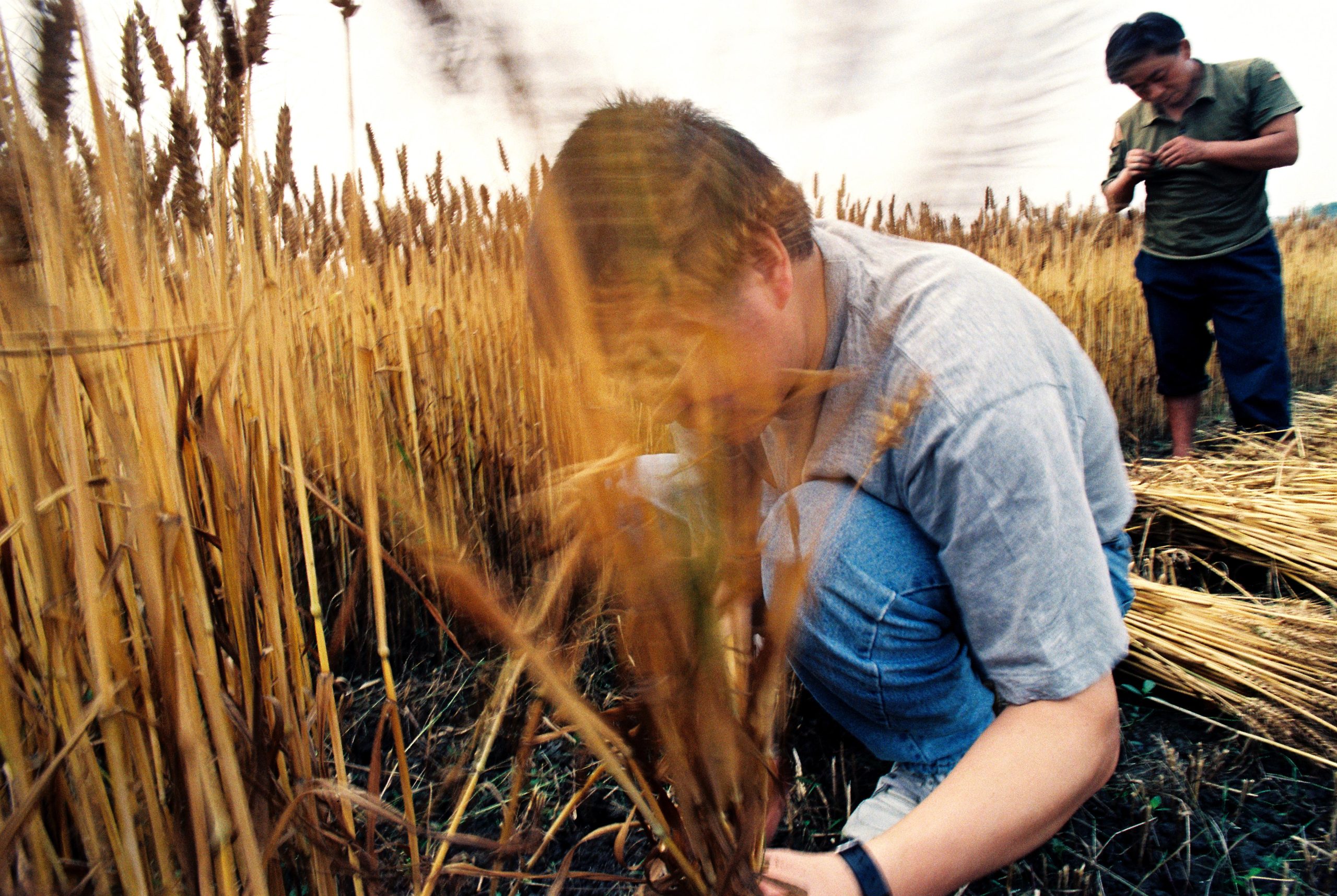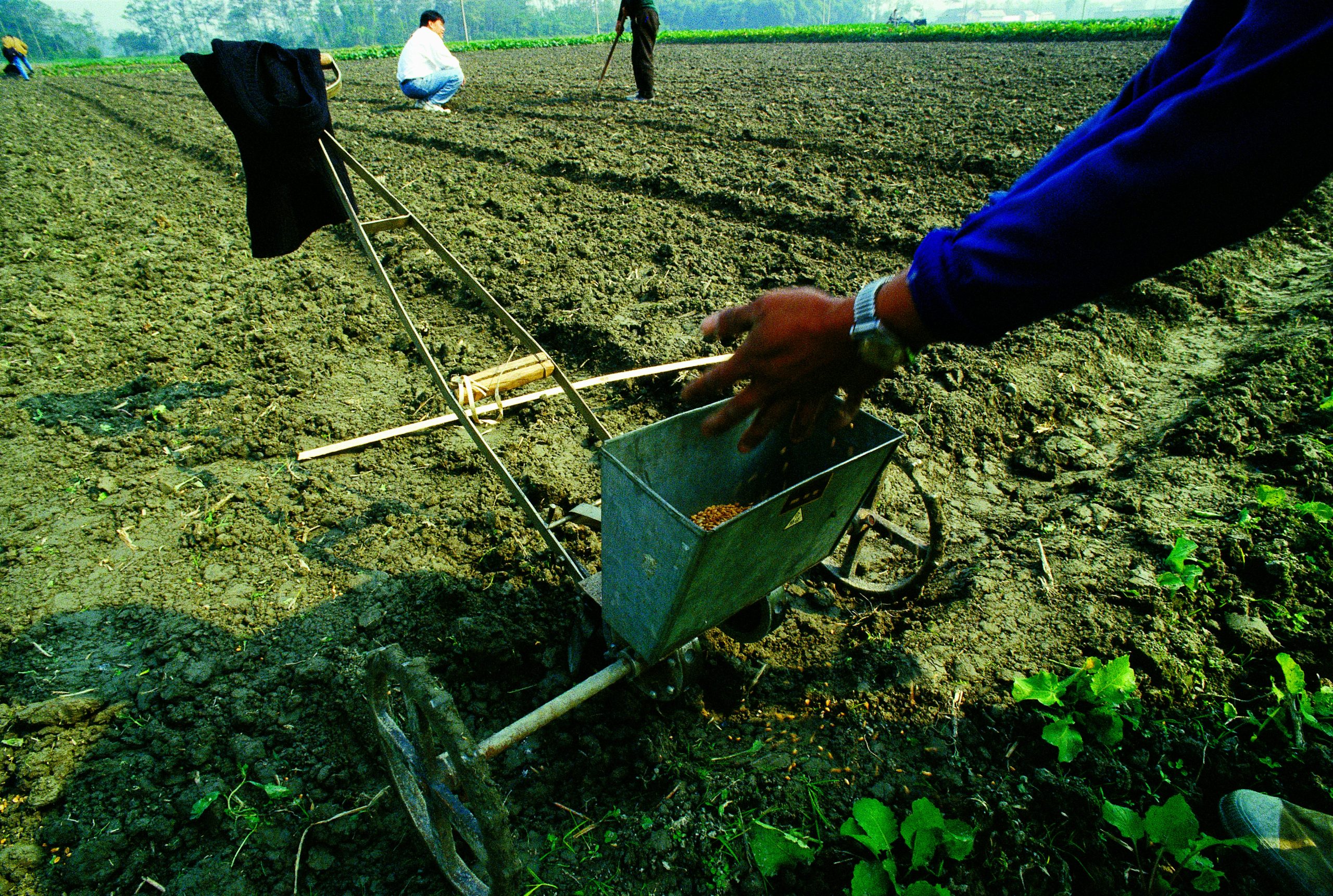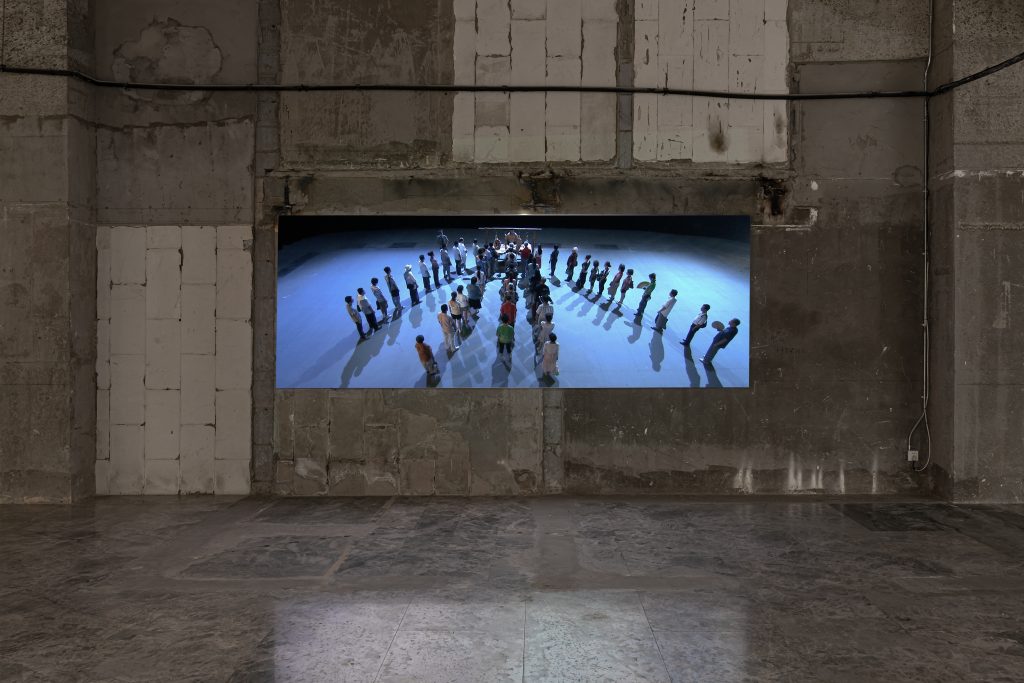Film
Circulation – Sowing and Harvesting
1994
From October 1993 to May 1994, Wang Jianwei signed a contract with farmers in Yongquan Township, Wenjiang County, Sichuan Province to plant one acre of a new strain of wheat, Chuanyu-12# bred by the Academy of Agricultural Sciences, and jointly observed and recorded the dynamic integrated system of sowing and harvesting.
For the 1994 project Circulation – Sowing and Harvesting, Wang Jianwei returned to the rural community he had once had to live in (as a city graduate forced to settle in the countryside) and signed an agreement with the local farmers: The farmers would take one field of earth as a test plot in which they would plant a new strain of wheat provided by him. The farmers take care of the planting, but the risks and returns would be shared by both parties. The test plot in the end produced 400 kg of wheat, more than 50kg more than any of the other local fields. Wang and the farmers split the harvest into four parts:
one part paid as tax on the grain, one part left as seed for the next season, one part grain for the farmers, and one part for Wang himself. He documented the entire planting and harvesting process on a point-and-shoot camera, delving into the new relationships built upon his “artist identity” when this enters new domains.
Seeing this as a “scientific laboratory”, Wang attempts to build a de-subjectified correlation between an object’s natural attributes and societal functions, intending to expel the subject from the identity of an artist and transfer it to a neutral object. Hereby, the artist as the subject becomes an object of its suspicion. Such suspicion, beside from depending upon his realizations of history and reality, also stems from his attitudes and awareness towards knowledge itself. In the physicist Niels Bohr’s theory of Complimentarity Principle of Wave-Particle Duality, one key point, “the complimentarity between two types of opposing images”, inspired Wang’s understanding of knowledge or art per se. He realized that an inherent suspicion and resistance of knowledge is contained within knowledge itself, so that knowledge is not an annotation or conception of art. Artistic practice neither shares the same boundaries with knowledge, nor exists in the same intermediary confinement. It is important to note that this does not permit one form of knowledge to act as the dictator, or to abduct or hijack other forms of
knowledge or non-knowledge, and that no system exists which can act to prop up another system.
— Hou Hanru
Related
Group Exhibition
Disappearance of the Surface I
MadeInGallery, Shanghai, China



